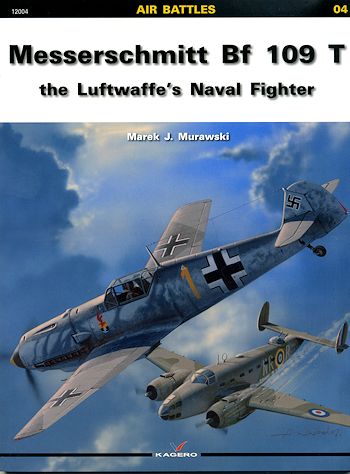 Germany was
one of the only major powers in WWII that did not have an aircraft carrier in
their fleet. In fact, to my knowledge, Germany has never had carrier borne
aviation. Sure, they have had naval aircraft, but those have been maritime
patrol, air/sea rescue, and maritime strike in various forms. All of them based
on solid ground.
Germany was
one of the only major powers in WWII that did not have an aircraft carrier in
their fleet. In fact, to my knowledge, Germany has never had carrier borne
aviation. Sure, they have had naval aircraft, but those have been maritime
patrol, air/sea rescue, and maritime strike in various forms. All of them based
on solid ground.
Prior to WWII, it was decided that would change and
the Graf Zepplin, Germany's first aircraft carrier was laid down and
construction got underway. In order to have a carrier, you have to have planes
so two aircraft were modified for carrier duty, the Ju-87C and the Bf-109T.
Specially built for the job was the amazing Fi-167 which had such a slow landing
speed that it could literally hover in a 30 knot wind. A dozen Fi-167s were
built along with a few Ju-87Cs and about 60 Bf-109Ts, the latter based on the
Bf-109E-3.
The 109Ts were all built and originally outfitted with
naval equipment, including an arresting gear as well as fittings for catapult
launching. Despite having longer wings than the standard 109, it was planned on
most launches using the catapult. Well, with the war going well in the early
years, the building of the Graf Zepplin was put on hold with the ship about
85-90% completed. This meant that there were aircraft sitting around not being
used so they were portioned out, after removing the naval equipment, mostly to
JG 77, based in Norway. It was there that the aircraft first saw combat. While
not fast enough to catch some planes, it was able to catch others.
It was then decided to start work on the carrier again
so the surviving planes were refitted with their carrier gear. But wait. Minds
were changed again so the planes were put into storage. About this time, USAAF
raids were getting more numerous. No sense in having fighters sitting around so
they were pulled out of storage, most of the naval gear removed and they were
issued to JG 11 in Norway, NJG 101 and eventually assigned to the island of
Helgoland, which was in the path of bombers headed for the upper Ruhr. While the
109T had some success against the bombers, the truth was that 1940 armament just
wasn't all that great at bringing down a B-17 or B-24. Still, they soldiered on
until replaced in mid-1944.
In this book on this most interesting aircraft, the
author goes through the entire process of choosing the aircraft and the various
prototypes that were developed to test carrier capabilities. Then it goes into
the production of the 109T and its wide and varied history with the Luftwaffe.
Pretty much every sortie that resulted in either victory or loss is covered in
this book. Nicely illustrated with period photos, there are also large color
views of some of the planes and a number of pages of excellent plans of both
prototype and production aircraft. In short, everything one would want to know
about the naval 109.
August 2013
Review book courtesy of the fine folks at
www.casematepublishing.com Visit them
for more excellent books.
If you would like your product reviewed fairly and
fairly quickly, please contact
me or see other details in the Note to
Contributors.
 Germany was
one of the only major powers in WWII that did not have an aircraft carrier in
their fleet. In fact, to my knowledge, Germany has never had carrier borne
aviation. Sure, they have had naval aircraft, but those have been maritime
patrol, air/sea rescue, and maritime strike in various forms. All of them based
on solid ground.
Germany was
one of the only major powers in WWII that did not have an aircraft carrier in
their fleet. In fact, to my knowledge, Germany has never had carrier borne
aviation. Sure, they have had naval aircraft, but those have been maritime
patrol, air/sea rescue, and maritime strike in various forms. All of them based
on solid ground.